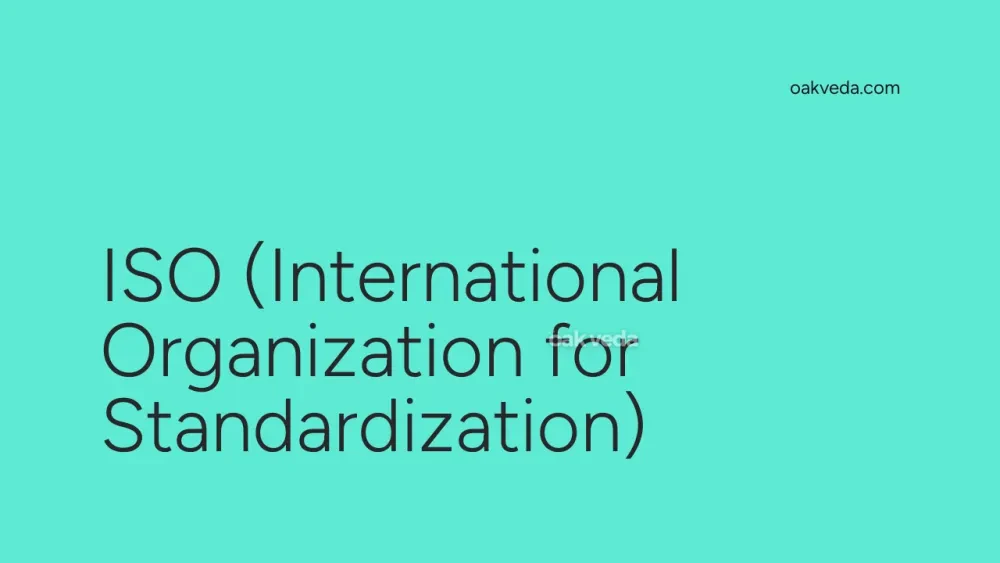
What is the Full Form of ISO?
The full form of ISO is the International Organization for Standardization. This global body plays a crucial role in developing and publishing international standards across various industries and sectors.
What is International Organization for Standardization?
The International Organization for Standardization, commonly known as ISO, is an independent, non-governmental organization that brings together experts from around the world to develop and maintain international standards. These standards ensure quality, safety, and efficiency in products, services, and systems across different industries.
Origin and Development of ISO
The roots of ISO can be traced back to the 1920s with the establishment of the International Federation of the National Standardizing Associations (ISA). However, the organization as we know it today was officially founded on February 23, 1947, in the aftermath of World War II.
- 1920s: ISA is established as a precursor to ISO
- 1942: ISA operations are suspended due to World War II
- 1946: Delegates from 25 countries meet in London to discuss the future of international standardization
- 1947: ISO is officially founded, with its headquarters in Geneva, Switzerland
It's worth noting that contrary to popular belief, ISO is not an acronym. The name is derived from the Greek word "isos," meaning "equal," reflecting the organization's goal of creating standards that apply equally to all.
How does ISO work?
ISO operates through a network of national standards bodies from 167 countries. These members collaborate to develop consensus-based international standards through various technical committees and working groups. The process typically involves the following steps:
- Proposal of a new standard
- Formation of a working group
- Development and discussion of a draft
- Consensus building among members
- Final draft approval
- Publication of the standard
Types of ISO Standards
ISO develops standards for a wide range of industries and applications. Some of the most well-known types include:
- Quality Management: ISO 9001
- Environmental Management: ISO 14001
- Information Security: ISO 27001
- Food Safety: ISO 22000
- Occupational Health and Safety: ISO 45001
Functions of ISO
The primary functions of ISO include:
- Developing and publishing international standards
- Promoting the adoption of international standards globally
- Facilitating international trade and cooperation
- Encouraging innovation and addressing global challenges
Applications of ISO Standards
ISO standards are applied across numerous sectors, including:
- Manufacturing and engineering
- Healthcare and medical devices
- Information technology
- Agriculture and food production
- Energy and environmental management
- Service industries
Features of ISO Standards
Key features of ISO standards include:
- Consensus-based: Developed through agreement among experts
- Globally relevant: Applicable across different countries and cultures
- Voluntary: Not legally binding unless adopted by governments or regulatory bodies
- Regularly updated: Reviewed and revised to stay current with technological advancements
Benefits of ISO Standards
Implementing ISO standards offers numerous advantages:
- Improved product quality and consistency
- Enhanced customer satisfaction and trust
- Increased operational efficiency
- Better risk management
- Facilitated international trade
- Competitive advantage in the global market
Limitations or Challenges of ISO Standards
While ISO standards offer many benefits, there are some challenges:
- Implementation can be resource-intensive, especially for smaller organizations
- The certification process can be time-consuming and costly
- Some critics argue that standards may stifle innovation in certain cases
- Keeping up with frequent updates and revisions can be challenging
Future Developments in ISO Standardization
ISO continues to evolve to address emerging global challenges and technological advancements. Some areas of focus for future development include:
- Standards for artificial intelligence and machine learning
- Circular economy and sustainable development
- Smart cities and Internet of Things (IoT)
- Cybersecurity and data protection
FAQs on ISO Full Form
-
Is ISO an acronym? No, ISO is not an acronym. It's derived from the Greek word "isos" meaning "equal."
-
How many countries are ISO members? As of 2023, ISO has 167 member countries.
-
Are ISO standards mandatory? ISO standards are voluntary, but they may become mandatory if adopted by governments or regulatory bodies.
-
How often are ISO standards updated? ISO standards are typically reviewed every five years to ensure they remain relevant and up-to-date.
-
Can any organization get ISO certified? Yes, organizations of any size or type can seek ISO certification if they meet the requirements of the specific standard.
In conclusion, the International Organization for Standardization (ISO) plays a vital role in establishing global standards that drive innovation, efficiency, and quality across industries. By understanding the full form of ISO and its functions, businesses and individuals can better appreciate the importance of these standards in our interconnected world.
You may be interested in:

